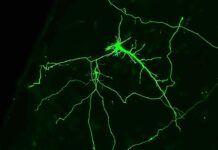Earth’s Unshackling: The Odyssey of Renewal in a Humanless Realm
Humanity’s Evanescent Reverberation
Picture an existence where Homo sapiens have vanished, leaving a fertile sphere teeming with diverse life forms. This fascinating concept, explored in assorted media, would have staggering ramifications on our planet—both immediate and enduring. Delve into this article, which uncovers the potential aftermath and the voyage Earth would embark upon should humanity abruptly evaporate.
I. Gaia’s Retaking: The Instantaneous Consequences of Human Eradication
Power Grid’s Diminishing Luminescence
In the absence of mankind, power-generating behemoths would falter, necessitating ceaseless supervision and fuel supply. Power grids would expire within hours, cloaking metropolises in obscurity. Solar panels and wind turbines, though initially persevering, would ultimately succumb without human intervention.
Beasts’ Emancipation
Absent humans, tamed creatures—pets and farm animals alike—must rely on their instincts. While many would face demise, certain species would acclimate, reproducing and establishing new populations. Zoos and aquariums would witness animal exoduses, resulting in thriving or struggling species in unfamiliar habitats.
II. Civilization’s Disintegration: The Deterioration of Anthropogenic Edifices
Architectural Degeneration
As eons elapse, edifices would languish, succumbing to elemental exposure, neglect, and vegetative invasion. Concrete, steel, and glass structures would be the first to crumble, while sturdier materials, like stone, could withstand the test of time.
Transportation’s Demise
Devoid of humans, roads, bridges, and railways would deteriorate. Flora and arboreal forces would reconquer the terrain, penetrating concrete and asphalt. Eventually, once-bustling transit systems would devolve into disintegrating relics.
III. Verdant Reawakening: Recuperating Earth’s Ecosystems
Wildlife’s Renaissance
Freed from human dominion, fauna populations would flourish. Species teetering on the brink of oblivion would experience resurgence, repopulating and expanding habitats. Novel ecosystems would emerge, engendering a rich and thriving biotic realm.
Oceanic Convalescence
Ceasing human pollution, oceans would gradually recuperate. Dispersing plastic debris and chemical contamination, repopulating overharvested species, and regenerating vital coral reefs would foster a stabilized and biodiverse aquatic universe.
IV. Distant Horizons: A Sphere Reimagined
Humanity’s Fading Imprint
Millennia would erase most anthropogenic structures and artifacts, devoured by nature’s inexorable progression. A few remnants—like the Great Wall of China, the Pyramids of Giza, or Mount Rushmore—would linger, testifying to our fleeting existence.
Equilibrium’s Homecoming
Unshackled from human meddling, Earth’s ecosystems would gravitate toward a fresh balance. Climatic patterns might find stability, enhancing the planet’s overall vitality. In humanity’s void, Earth would embark on a regenerative odyssey, restoring its resplendent, dynamic nature.
Conclusion: A Poignant Paradox
The evaporation of humans would yield monumental effects on Earth. Though this introspection might evoke melancholy, our planet’s ultimate healing and equilibrium restoration reveal a glimmer of hope. Contemplating a humanless world underscores our environmental impact, emphasizing the imperative to adopt sustainable practices, safeguarding Earth’s habitability for generations yet unborn.
Google News | Telegram
















